#might be benefitting or i might be destroyed by the sheer amount of artistic power
Explore tagged Tumblr posts
Text
QUESTIONN is there a Disco Elysium server on Discord?
(I'm sure there is one I just haven't seen it around.)
Wondering if I should join one, even though I'm not an actively social person, it might be fun ?
#also get to know people!#im only on one discord server w/ my friends but none of them knows disco all too well :']#might be benefitting or i might be destroyed by the sheer amount of artistic power#power beyond my silly style could muster#but still could be beneficial !#disco elysium#question...
15 notes
·
View notes
Text
TT Rambles: Building a Kaiju Cast
As far as I’m concerned, the kaiju renaissance is in full swing - not just because of movies like Godzilla: King of the Monsters and Pacific Rim, but because of all the original novels, webcomics, etc. that the kaiju fandom is publishing. It’s beautiful to see all these new kaijuverses blossoming.
and I want to see more of them
It takes me back to that brief, shining period in the early 2000′s where there were DOZENS of thriving kaijuverses on Deviantart, all with weird and wonderful takes on giant monsters that oozed with style and creativity. God that was a good time and
I want to see more
So, as a person with a semi-successful kaiju-verse of my own, I’ve been thinking about how I could encourage people to make more kaiju beyond, like, just making my own and hoping it resonates and inspires people like the kaiju-verses that I see inspire me. And then my teacher brain got to thinking - one of the best ways to help people create is to give them structure to build off of. So that’s what I’m going to do.
Friends, enclosed here are some written instructions on how to build a fun and dynamic kaiju cast. You don’t have to follow these rules to the letter, mind you, but if you don’t know where to start, this might help.
Step 1: Pick Your Flavor
There are more ways to make a kaiju story than you may realize, as the genre is deceptively diverse despite its obscurity. However, for the sake of simplicity, I’m going to try to reduce it to two main categories:
Hero Monster(s) saves the world from evil monsters
OR
Hero humans attempt to save the world from evil monsters
This is a crucial fact to figure out before you make your kaiju cast, because the differences between these two variants will inform how you structure your monsters. In the first approach, the monsters not only need personality and motivations, but character arcs, and benefit from being as distinct from each other as possible. In the second, the monsters generally have to be a bit simpler and less, well, person-y, so we don’t feel as bad when they’re cut down by the heroes. They also tend to be more uniform in appearance, origin, and personality, to make the division between humanity and monster more clear cut. The first approach will generally result in a “humanity needs to be more open minded and compassionate to those we deem as other” sort of message, while the latter will generally show how humanity needs to pull together in the face of catastrophic threats. On the surface these two story routes may seem very similar, but the differences between them are important ones.
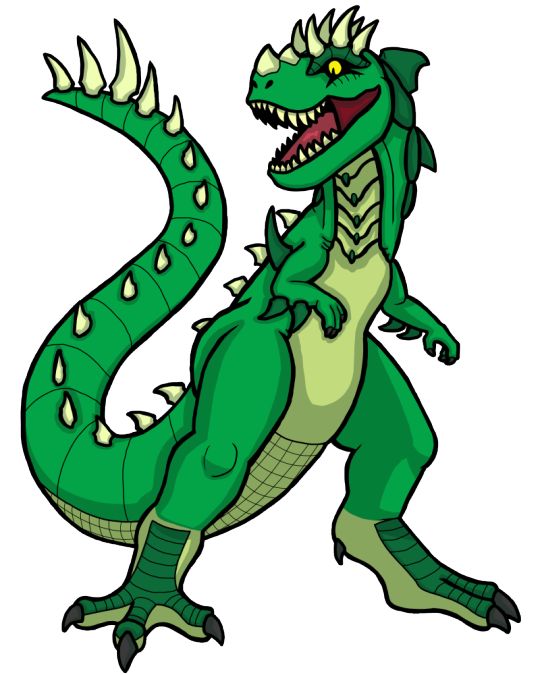
Step 2: The Main Kaiju
In addition to OC kaijuverses, another big trend in the glory days of the DA kaiju fandom was revamping/redesigning the cast of the Godzilla franchise. There were dozens of different takes on it, and a friend of mine noted a peculiar but important lesson that could be learned from each of them: if you looked at how each artist redesigned Godzilla himself, you could basically predict how the rest of the monsters would look. This is because Godzilla is the crux of his universe - all the other monsters are designed to play off of him, and thus any change made to Godzilla will be reflected in the rest of the cast.
You can see this in other stories as well - Batman’s cast is built around his gothic horror/detective fiction roots, Spider-Man’s around his teen drama/sci-fi genre mashup, etc. As a general rule, stories are tailored to their protagonist, and in kaiju fiction, the protagonist is generally one of the giant monsters. Therefore, figuring out your main monster is important, as they will ultimately shape the entire story.
Now, when I say “protagonist,” I mean this in the “main/most prominent character” sense, rather than the “hero” sense. Your main kaiju may be a bad guy - they may be the villain of the story, the face and root of its conflict. Alternatively, they may live up the hero label in every sense of the word - one of the coolest things about the Kaiju genre is that it sports a LOT of heroes that are also non-human characters.
If you are going for the second variation of the kaiju genre - that is, the “Humans destroy evil monsters” story - your main kaiju still matters, even though it likely isn’t a prominent enough character to really qualify for protagonist status. In shows like Evangelion and Ultraman, or movies like Pacific Rim, there are still essentially “main” kaiju - that is, kaiju who define the style and approach that monsters in the series will take. Often they’re the first monster the heroes encounter - Knifehead from Pacific Rim, for example, establishes early on the aesthetic and rough personality of the giant monsters featured in the movie. Other times they show up later in the story to make a big impact - Red King and Gomora in Ultraman both showcase the creativity of the show’s designs while having unique personalities and power sets that really leave an impact on the viewer.
When creating your main kaiju, consider the following questions:
- What if your monster’s main motivation? Is it looking for something? If so, what? Is it seeking revenge? If so, why? Is it defending its territory? Is it investigating civilization? Is it searching for food? Company? The greatest kaiju characters have clear and defined motivations to bring them into the plot, just like all good characters do. What is your monster’s drive?
- How tough is your monster? Kaiju generally get into a lot of violent conflicts, so determining how much punishment your monster can both withstand and dole out is important.
- What are your monsters’ vulnerabilities? This includes both physical weaknesses and psychological ones. Are they weakened by the cold? Incapable of flight? Slow moving? Quick to anger? Stupid?
- What strengths/powers does your monster have? Can it heal fast? Is it smart? Does it have unique weapons? Is it creative?
- What quirks does your kaiju have? Is it gluttonous? Cocky? Graceful? Clumsy? Does it beat its chest or dance in triumph? Does it cackle maniacally while wreaking havoc?
- What is your monster’s relationship to humanity? Does it hate humans? View them as food? Feel indifferent to them? Is curious about them? Cares for them? How does humanity feel about it in turn? Does this relationship change over the course of the story?
- What is your monster’s attitude towards other monsters? Is it hostile towards them? Friendly? Indifferent? Does its attitude vary depending on the monster? Is its attitude mostly consistent with a few exceptions? Does it have friends? Enemies?
- How did your monster come to be? Is it an atomic mutant? A mythic beast? A space alien? A prehistoric creature from a forgotten age? We’ll dive into the archetypes associated with these origins later, but keep the question in mind.

Part 3: Other Kaiju Roles
Once your main kaiju is figured out, you can start building the cast proper in reaction to it. There are LOTS of ways you can do this, but I’m going to focus on a few common roles supporting kaiju have to play:
- The Arch Enemy: the King Ghidorah to your kaiju’s Godzilla, the Gyaos to its Gamera, the arch enemy is exactly what it sounds like: your main kaiju’s recurring nemesis, a big bastard of a monster that your main kaiju absolutely hates. You don’t have to limit yourself to one of these, of course - most main kaiju in fiction have a LOT of enemies, since monster battles are one of the main draws of a kaiju story. At the same time, most kaiju stories also tend to have one kaiju that is more wicked than most, whose grudge with the main kaiju is more vicious than normal. Creating an arch enemy for your main kaiju is a good way to give your story structure - every protagonist needs a primary antagonist to struggle against.
- The Guardian of the Earth: a lot of main kaiju tend to be anti-heroes, often starting off as enemies of mankind before slowly becoming protectors of the earth. As a result, a lot of kaijuverses often include an explicitly good kaiju who exists in contrast to both the main kaiju AND the main kaiju’s enemies. If the Arch Enemy kaiju is often what the main kaiju could become if they don’t change their ways, the Guardian of the Earth is what the main kaiju usually works towards being. Or, in short: every Godzilla needs a Mothra to be the angel on their shoulder.
- The Damage Sponge: Sometimes there are kaiju who are famous not for their prodigious destructive power, but rather for their ability to endure ridiculous amounts of damage, even by kaiju standards. The damage sponge normally isn’t the main kaiju, since the main kaiju’s job is to establish a baseline, while the damage sponge is defined by being more durable than other monsters.
- The Runt: a smaller than usual kaiju, who often compensates by being faster and more clever than the usual kaiju.
- The Giant Among Giants: the kaiju that makes other kaiju feel small, generally used to escalate the plot by its sheer power.
- The Rival Turned Ally: since kaiju generally socialize by fighting, most kaiju friendships begin with an unsuccessful fight to the death. Often your main kaiju will have at least one friend who began as a bitter enemy.
- The Big Eater: In large kaiju casts where the kaiju have different motivations and morals, there will almost always be one kaiju whose ethos can be defined as “neutral hungry.” It’s not good, it’s not evil, it just wants to eat, and unfortunately everyone else looks like a viable meal.
- The Brute: while all kaiju are generally violent and tough, the Brute takes it to another level. Its violence will be more extreme, its bloodthirstiness beyond compare, and its raw strength will surpass most if not all of the other monsters on the cast list.
- The Clever Bastard: like the Brute, the Clever Bastard makes for a harder than normal fight. However, instead of relying on sheer strength, the Clever Bastard uses cunning to make the fight more vicious, being a devious schemer who thinks significantly more than the average monster. It may also have more than a few tricks to its biology to help it as well, and generally manages to throw the heroes off guard by doing things they wouldn’t expect.
- The Innocent: in a world full of violent monsters, this kaiju is a notable exception for its sweetness and (relative) vulnerability. It means no harm and often has few ways to defend itself, and as a result is generally imperiled by the more vicious and bloodthirsty giants in the setting. The main kaiju may actively try to protect it, though the harsh world of kaiju means its likelihood of survival is rather slim.
Part 4: Kaiju Archetypes
Ok, now that we’ve talked about the more substantive personality based stuff, let’s get onto some fun surface details. The origin and design of your kaiju are important in their own right, but work best when they are made in service of your kaiju’s personality and role in the story. A lot of people start with these archetypes first - “I’m gonna make a fire breathing reptile!” - and while this can result in a good monster design, it doesn’t necessarily translate into a memorable kaiju character. Tailoring the design and origin to your kaiju’s role and personality, on the other hand, is more likely to result in a character we remember, since the design is now more than a surface detail - it’s an extension of the character.

Archetype 1: The Fire Breathing Reptile - best exemplified by the big two, Godzilla and Gamera, almost every kaijuverse has at least one big reptilian monster, and that monster likewise almost always has the ability to breath fire. It calls back to the many European dragon myths, and is just a fun visual in general. This archetype is so prolific that many modern kaijuverses actually skip it because it’s considered cliche, but while it may be hard to make a fire breathing reptile kaiju standout, the trope is still a classic and one many people think of as synonymous with the genre.

Archetype 2: The Big Ape - similarly, King Kong has made giant apes a staple of the genre, to the point where they are almost as common as fire breathing reptiles are. King Kong vs. Godzilla in turn made it customary to pit these two archetypes against each other, and as a result every kaiju story that has both a fire breathing reptile and a big ape will almost always portray them as natural enemies. The Big Ape is one of the archetypes that is most likely to be presented as sympathetic/heroic, following the logic that more closely related to humanity a creature is, the more noble it must be.

Archetype 3: The Magnified Bug - since kaiju are in part defined by being way bigger than an animal has any right to be, one of the most extreme visuals you can bring to a kaiju design is to take something that is normally very small and make it HUGE, because this emphasizes just how exaggeratedly big the kaiju is. As a result, giant arthropods - insects, spiders, etc. - are very common in the genre, as they really sell the idea of kaiju being unnaturally enormous creatures. Magnified bugs are generally not treated as sympathetic kaiju for the same reason big apes usually are - if we treat “more human = more good” as true, then bugs, being distantly related to humanity, can’t be very good creatures. However, there is at least one prominent and notable exception to this rule, and to be honest it’s a rather shitty rule anyway.

Archetype 4: The Mechanical Doppelganger
Ever since Mechani-Kong stepped onto the silver screen, it has been a tradition for a main kaiju to have a robot or cyborg made in their image as part of their rogues gallery. Hell, even Gomora from Ultraman got one, and that’s a show where the monsters aren’t protagonists! Like the previous tropes, this is one that comes to mind when people think of the genre, as countless parodies (including an infamous episode of South Park) have shown.
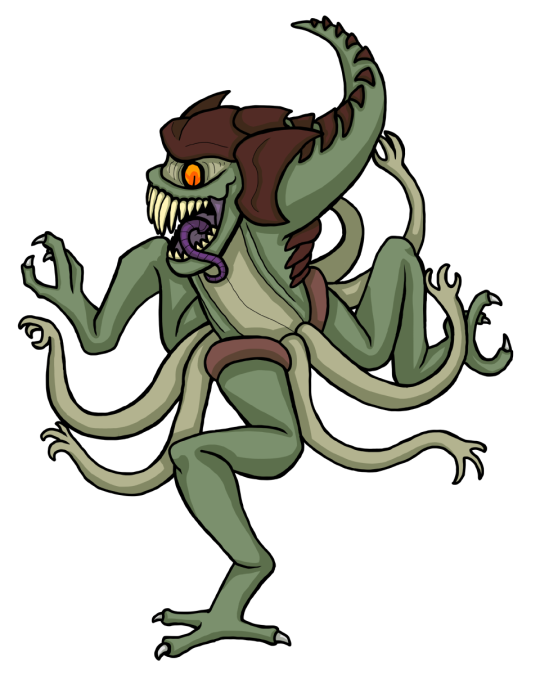
Archetype 5: The Alien Invader - a monster from another planet, with all the strange biological quirks such an origin implies. In Monster Saves the World kaiju stories, the alien is usually brought in late in the tale to heighten the stakes by delivering a stranger threat than the usual kaiju. In Humanity Saves the World kaiju stories, however, most kaiju tend to be alien in origin, which is used to justify wiping them out since they are an invasive species by nature. Alien kaiju are rarely sympathetic or heroic.

Archetype 6: The Mutant - whether the result of atomic fallout, genetic engineering, pollution, or some other unnatural mistake, the mutant is a new lifeform whose monstrous form is the direct result of humanity breaking the natural order of things. A LOT of kaiju are mutants, as the kaiju genre began during the atomic age as a direct reaction to the discoveries of what radiation could do to living creatures (discoveries that ranged from “Wow these radioactive fruits are really big!” to “Oh god this radioactive man is full of tumors!”). When a mutant is in a kaiju story, it exists at least partially to point out how humanity is screwing up.

Archetype 7: The Prehistoric Monster - often (but not necessarily) going hand in hand with the fire breathing reptile, the prehistoric monster is a kaiju whose kind lived millions of years before humanity evolved, in a time when giants ruled the earth. It is only a monster now because the world moved on while it didn’t - small creatures took over while it slumbered in some hidden location. This trope is becoming less common now that science has marched on and we treat the giant fauna of prehistory less like monsters and more like, y’know, actual animals, but it’s still a fun one to play with even if it has little basis in actual science.
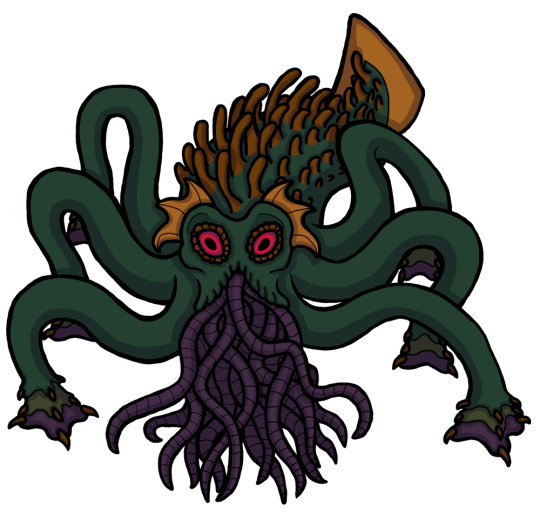
Archetype 8: The Sea Monster - the ocean is full of weird animal life, and creatures are able to get much larger underwater than they can on land. As a result, giant sea monsters are a trope as old as story-telling itself, and are particularly prominent in kaiju fiction. Sea monster kaiju have a tendency to be particularly huge and abstract as kaiju go - one of the perks of hailing from a relatively alien environment.
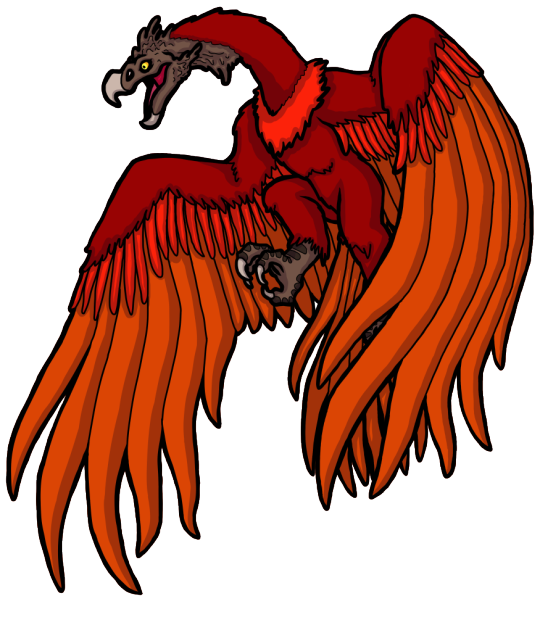
Archetype 9: The Mythic Monster - While the earliest kaiju stories lean more sci-fi than fantasy, the genre quickly stretched to take elements from both. As a result, it is just as common to see kaiju based on real life myths as it is to see ones that are atomic mutants or space aliens. In fact, some of the bigger names in the kaiju genre have even alternated between having sci-fi and mythic origins, being atomic mutants in one tale and guardian monsters of ancient kingdoms in the next.
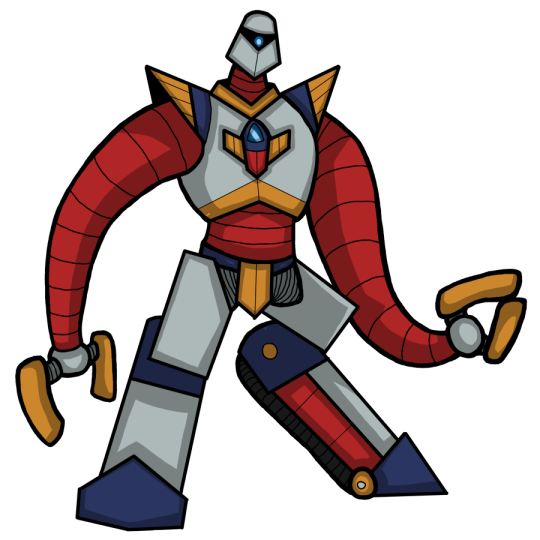
Archetype 10: The Defense Robot - Often (but not always) overlapping with the Mechanical Doppelganger, this enormous mecha is humanity’s ultimate weapon in the struggle to survive a world filled with kaiju. The actually effectiveness of the defense robot varies from story to story, but they often have greater offensive capabilities than flesh and blood kaiju while at the same time being a lot less durable. The Defense Robot rarely gets out of a battle unscathed - though it just as often comes back with a new remodeled look to fight another day (and also sell more toys).
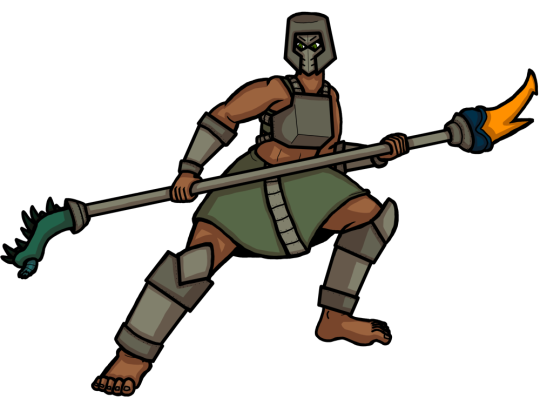
Archetype 11: The Human Kaiju - most common in Humanity Saves the World from Kaiju stories, the human kaiju is, well, a human who becomes a kaiju. Sometimes it’s a temporary transformation, other times it’s permanent. Human kaiju are almost always the main characters of their given story, as the story potential of a human who can take the fight to the monsters is VAST.
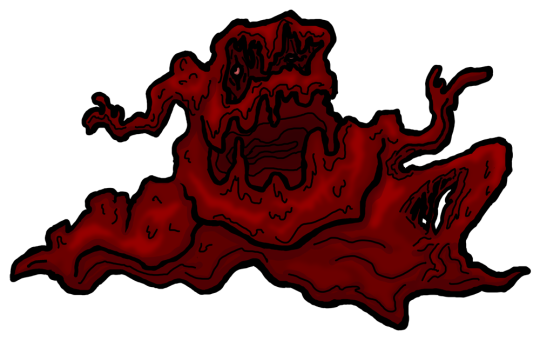
Archetype 12: The Blob - our final archetype will be the blob, because sometimes you just want a big ol’ heap of goo in your story.
Conclusion
To reiterate, none of these things should be considered “requirements” for a kaiju story. Think of this as a set of guidelines rather than strict rules to follow. Many of the best kaiju stories have thought outside these archetypes, roles, and character questions, so you should by no means feel constricted to follow these ideas to the letter. However, if you want to start on your kaijuverse but don’t know where to begin, please consider this as a starting point. If you work with this approach, I think you’ll be on your way to making a fun cast of giant monsters in no time!
72 notes
·
View notes